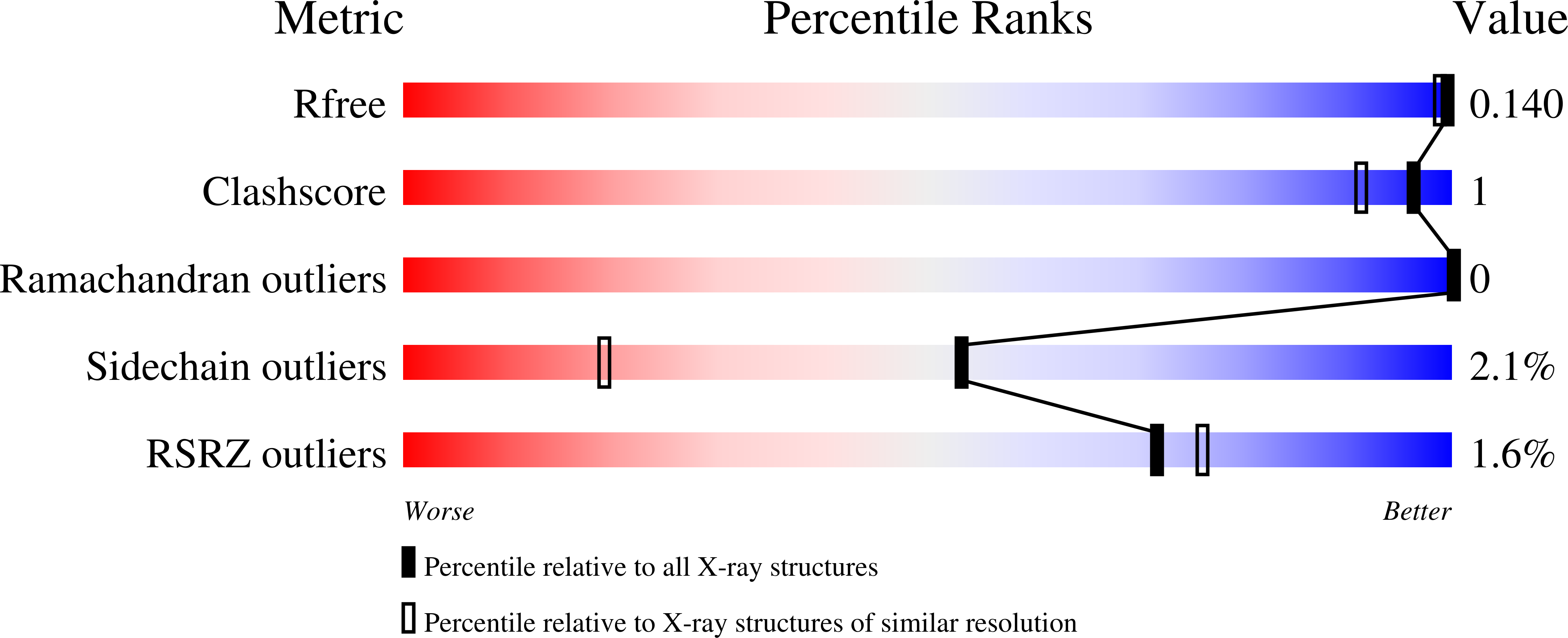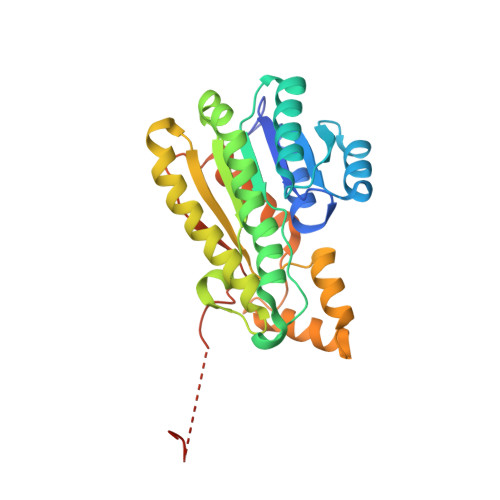Structure-based design and profiling of novel 17 beta-HSD14 inhibitors.
Braun, F., Bertoletti, N., Moller, G., Adamski, J., Frotscher, M., Guragossian, N., Madeira Girio, P.A., Le Borgne, M., Ettouati, L., Falson, P., Muller, S., Vollmer, G., Heine, A., Klebe, G., Marchais-Oberwinkler, S.(2018) Eur J Med Chem 155: 61-76
- PubMed: 29859505
- DOI: https://doi.org/10.1016/j.ejmech.2018.05.029
- Primary Citation of Related Structures:
5O42, 5O43, 5O6O, 5O6X, 5O6Z, 5O72, 5O7C - PubMed Abstract:
The human enzyme 17¦Â-hydroxysteroid dehydrogenase 14 (17¦Â-HSD14) oxidizes the hydroxyl group at position 17 of estradiol and 5-androstenediol using NAD + as cofactor. However, the physiological role of the enzyme remains unclear. We recently described the first class of nonsteroidal inhibitors for this enzyme with compound 1 showing a high 17¦Â-HSD14 inhibitory activity. Its crystal structure was used as starting point for a structure-based optimization in this study. The goal was to develop a promising chemical probe to further investigate the enzyme. The newly designed compounds revealed mostly very high inhibition of the enzyme and for seven of them the crystal structures of the corresponding inhibitor-enzyme complexes were resolved. The crystal structures disclosed that a small change in the substitution pattern of the compounds resulted in an alternative binding mode for one inhibitor. The profiling of a set of the most potent inhibitors identified 13 (K i ?=?9?nM) with a good selectivity profile toward three 17¦Â-HSDs and the estrogen receptor alpha. This inhibitor displayed no cytotoxicity, good solubility, and auspicious predicted bioavailability. Overall, 13 is a highly interesting 17¦Â-HSD14 inhibitor, which might be used as chemical probe for further investigation of the target enzyme.
Organizational Affiliation:
Institute for Pharmaceutical Chemistry, Philipps University Marburg, 35032, Marburg, Germany.


















